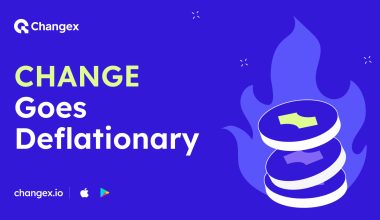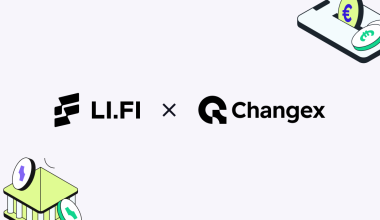Blockchains changed everything. Then staking came and changed everything again.
With the rise of proof-of-stake assets, staking has almost entirely become the DeFi norm for generating passive income. Considering the amount of staking opportunities and earn products in the space, this is of course unsurprising.
Staking as a mechanism is quite well known, but the model behind it? Not so much. To get to the point of this article, at the very least a brief explanation is needed. However, if you know what PoS is and how it works, you can skip to the good stuff.
What is staking
Staking is possible with blockchains that employ the Proof-of-Stake consensus mechanism. Don’t give up yet, please, we’ll explain!
So, Ethereum 1.0 used, and Bitcoin still uses, the so-called Proof-of-Work mechanism, which relies on so-called “mining” to verify for network security and transaction verification. “Mining”, you see, is simply processing power provided by a computer, which is used to solve complicated cryptographic problems, and thus keep the network going. However, it also uses a lot of energy and can cause bottlenecks when the network is under heavy load.
And it doesn’t have staking, and that, the way we see it, is a major downside.
Instead of using processing power to secure the network, the Proof-of-Stake mechanism uses tokens to do that.
This is staking — the process where the holders of a Proof-of-Stake cryptocurrency decide to “lock” a part of their tokens in a staking pool, where they will be put to work by the network, securing it and validating transactions.
While the tokens are locked, stakers earn rewards in the form of interest, because the network actively uses them and draws benefits from them.
Staking is thus mutually beneficial to both parties — the blockchain, and the stakers who provide the funds. The users secure the network (and in many cases also get voting rights on network-related decisions, actively participating in its governance), while the network rewards them with passive income.
Most Proof-of-Stake economies reward their holders on a monthly, quarterly, or even daily basis, with APRs in the 10–20% range, but some go much higher than that.
🔥 And now, onto the good part — what if there was a way to increase your staking reward yield? What if you could use leverage to boost your holdings and your APR by 2x? Leverage is seen by many in trading as a very risky move, which holds a flimsy promise of high rewards in return — should it work. But “Leverage” and “Staking” have hardly made it into the same sentence until now, and things cannot be more different when compared to risky leveraged trading.
The Good Stuff: Leveraged Staking has the potential to provide the highest, most sustainable returns in DeFi
Changex is one of the first projects that is designing a Leveraged Staking mechanism, while making it accessible to the mainstream user. Margin positions will be specially designed to leverage the base staked asset, which will in turn be used as collateral, while keeping it staked uninterruptedly.
In order to really grasp the Leveraged Staking system, we need to bring another element of the Changex ecosystem into the picture — the stablecoin lending feature.
The Changex app will let you lend your stablecoins for an APR of anything between ~5-9.5%. When a staker decides to use Leveraged Staking, he taps into this stablecoin pool, borrowing funds to buy more of his staked asset and increase his holdings, say by a factor of 2x.
Let’s break it down by taking a HYDRA staking position (~45% APR) as an example:
- Lenders lend USDT for an interest rate of 5-9.5% in the Changex app;
- Staker holds $10,000 worth of HYDRA and borrows $10,000 equivalent of USDC for 9.5% interest, using his initial HYDRA amount as collateral;
- The borrowed USDT is used to buy $10,000 more worth of HYDRA through high-liquidity DEX pools;
- The newly acquired HYDRA is placed into a Leveraged Staking pool, earning its standard interest rate of ~45%;
- The staker repays the 5-9.5% interest to the stablecoin lender, while everything else is benefited as passive income;
- The final APR on the staked HYDRA amounts to 45% + 35.5% = 80.5% (in case the stablecoin APY is 9.5%)
Smart contracts will handle the entire Leveraged Staking economy
This means that the human factor, which has proven to pose a risk to DeFi and users, will be completely eliminated from the system. When lending your stablecoins, the operation is handled by a smart contract.
When you want to leverage your asset and increase your staking yield, that too is handled by a smart contract. Changex has no active role as a middle-man in these transactions, and everything is exclusively peer-to-peer.
Leveraged Staking will work with any POS asset integrated in the Changex app
As such, the team will work to include new high APR economies into the app, and in the process will also onboard their respective communities, which will immensely benefit the entire ecosystem not only in terms of value, but also in terms of exposure.
This DeFi model enables an intricate network of cooperation and synergy between the involved parties and offers a massive boost to the income generated through staking, while always leaving the door open for additional onboardings and new opportunities.
Follow us on Twitter to never miss a thing or join the conversation in Telegram.
Don’t have a Changex wallet yet? CHANGE APY sits at ~47%, and you can also stake your HYDRA for the best reward yield.
Get your wallet now
🤖 Changex for Android | 🍏 Changex for iOS
💖 Thanks for reading,
The Changex team







7 comments
Awesome BLOG with an awesome great features
Much more success
thank you for your information, this is so useful for me
Great!
I am glad reading this blog
It will be the first time a defi app offers this functionality, it will be a game-Changer
Amazing
I think everyone is sleeping on this. It’s completely game-cha bing for those who know. Incredible innovation from the team, well done.